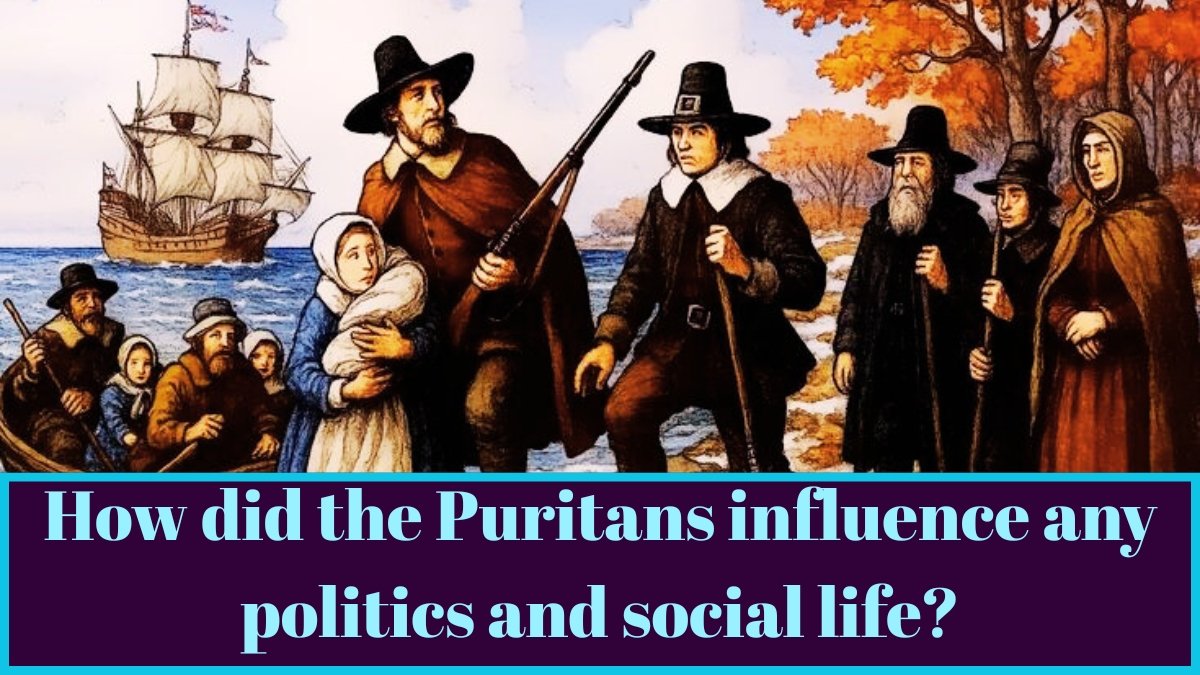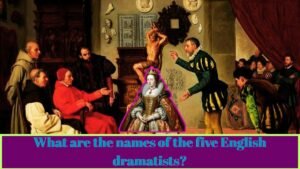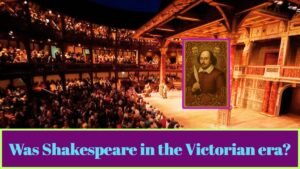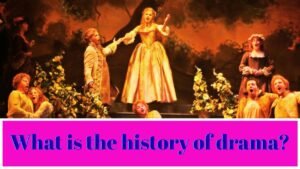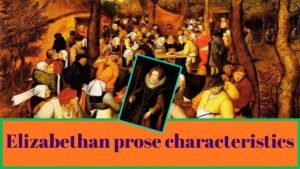How did the Puritans influence any politics and social life?
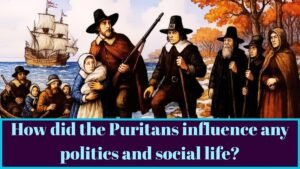
The ascendancy of Puritans in the reigns of James I and Charles I-Quarrels between King and Parliament-Civil War and execution of Charles I-Cromwell and the Commonwealth-The tyranny of Puritan rule-Collapse of the Commonwealth after Cromwell-Restoration of monarchy.
On Elizabeth’s death in 1603 King James VI of Scotland became also James I of England. A glance at the geneological table will show that he had descended through the female line from Henry VIII, Elizabeth’s grandfather in the male line. His mother. Mary Queen of Scots, was a Catholic and was first married to the Dauphin, heir apparent to the French throne. The Dauphin dying, Mary returned to Scotland. She was a great beauty and being still young married her cousin Henry Stuart, Lord Darnley. Darnley became jealous of an Italian musicia musician, Rizzio, because of his intimacy with the queen and had him openly murdered. Encouraged by this rift between the queen and her husband, James Bothwell, an unscrupulous Scot, murdered Darnley and within three months of the murder the queen married the murderer. This conduct of the queen shocked the people who already hated her on account of her opposition to Presbyteria-nism, the national religion. Her mother, Mary of Guise, a French Catholic, had as Regent done her best to stem the tide of Reformation in Scotland but had failed. The queen succeeded no better. Her position becoming desperate, she sought shelter in England There she was kept a close prisoner for nineteen years, but as she became the centre of Catholic plots against Elizabeth, the latter had no alternative but to have her beheaded.
What was the Puritan society in the 1600s?
Her infant son James, by Darnley, had been left behind in Scotland where he was brought up a Presbyterian. He occupied his mother’s throne as James VI. As he was the only heir to the English throne after Elizabeth’s death, he united the two crowns and became James I of England.
James though brought up in the Presbyterian religion had no difficulty in accepting Anglicanism, for both are Protestant. The troubles which started almost immediately after his accession and which plagued England for more than half a century arose over two issues: religion and the right of the King to raise money without the consent of Parliament. During Elizabeth’s reign the principal opponents of the Reformed Church had been Catholics. In the new reign they made a desperate attempt to blow up the King and both houses of Parliament by hatching what is known as the Gunpowder plot (1605). The plot was, however, discovered in time and the conspirators were executed. The Puritans who had been compara-tively quiet so far now took the lead and brought religious contro-versy to the forefront. They regarded the ceremonies in the church as Popish and wanted the king to abolish them The King did not yield.
What are the social and political values of Puritanism?
The foreign policy of James further alienated a large number of his subjects. He wished to be a peacemaker in Europe and with this pupose he attempted to arrange a ma ch between his son Charles and the Infanta, eldest daughter of the King of Spain. The English hated Spain; they remembered the reign of ‘bloody Mary’ and the Spanish Armada. The princess, however, jilted Charles, who then married Henrietta Maria, daughter of the French King Louis XIII and sister of future Louis XIV. As she too was a Catholic, the marriage was no less distasteful to the people than the Spanish match which had fallen through; for, they feared that she might convert Charles or at any rate bring forth Catholic heirs to the English throne.
The second issue, that of money, led to a more bitter quarrel between King and Parliament. Though the Tudors had been despots, they had always treated Parliament with respect and carried it with them in all matters of national policy. James wanted to ignore Parliament and advanced the novel claim to rule by divine right. In other words, he held that Kings were the Viceroys of God, “the Lord’s annointed”, and it was a sin to disobey them. Thus James and after him Charles thought it beneath their dignity to consult Parliament. Parliament on its part was determined to maintain the Constitution according to which it alone had the power to grant money. James and Charles both tried to raise money by taxes without leave of Parliament. Matters came to a head early in the reign of Charles and he was forced to accept the Petition of Right, a document which declared that taxes not sanctioned by Parliament were illegal. It was a bitter pill for the King to swallow and it is not difficult to see why he hated Parliament Having quarrelled with all the three Parlia-ments he called during the first four years of his reign, he decided to dispense with Parliament altogether and for 11 years from 1629 to 1640 Charles ruled without Parliament.
This period called The Eleven Years’ Tyranny was marked by ruthless suppression of Parliamentary leaders and other opponents of the Government through farcical trials by special prerogative courts like the Star Chamber and the Ecclesiastical Court of High Commis-sion. To obtain money he adopted several illegal taxation measures which roused great resentment. In 1634 he imposed ‘ship-money’, a tax on coastal towns which was formerly paid in war-time in lieu of ships for defence. As it was imposed in peacetime, it roused great opposition. A puritan squire, John Hampden, refused to pay on the ground that it had not been sanctioned by Parliament. He was tried and condemned by the judges, who were afraid of the King.
The religious situation was aggravated by the appointment of Laud as Archbishop of Canterbury. Laud’s High Church or pro-Catholic policy was in fact the real cause of the Civil War. He enforced ritual in churches and banned Puritan or non-conformist worship outside them. This the Puritans found intolerable and many migrated to America. Instigated by Laud the King imposed Anglican worship on the Scottish church. This inflamed the Scots who signed a ‘Solemn League and Covenant’ with God by which they pledged themselves to defend Presbyterianism. They rose in armed revolt and Scottish armies marched upon England. Tous threatened, Charles was compelled to call Parliament in order to raise money for troops to defend England.
The Parliament which Charles called in 1640 on the advice of his Chief Minister Strafford lasted only three weeks and is called the ‘Short Parliament’. It refused the money wanted by the King and was summarily dismissed. But as the Scots had already marched into Yorkshire, Charles called Parliament again the same year. Tais is known as the ‘Long Parliament’, since it continued for nearly 20 years (1640-1660). It was this Parliament which saw the King beheaded. With the money granted by it Charles bribed the Scots out of the country. Under the leadership of Pym, Hampden, and Cromwell the Long Parliament annulled the illegal acts of the King, impeached and executed Laud and the Earl of Stafford, and aboli-shed the much hated Star Chamber and the Court of High Commission.
What ultimately precipitated the Civil War was the hot-headed-ness of the King. Infuriated against Parliament he went down to the House of Commons (4 January 1642) to effect the illegal arrest of Pym, Hampden, and three others by main force. But having been warned beforehand they had escaped. The Parliament was now convinced that Charles could not be trusted and the issue had to be decided by arms. The King fled to the North and Civil War began. The Anglicans and Catholics who hated the Puritans rallied round the king These royalists were called cavaliers (from cavalry), while the Puritan soldiers are called ‘Roundheads’ from their close-cropped hair. Parliament secured the help of Scotland by signing the “Covenant” to establish Presbyterianism in England. It is not necessary for us to go into details of the Civil War. It threw up heroes on both sides. The King was worthily supported by his nephew Prince Rupert and the Highland royalist Montrose, but they were defeated by by Oliver Cromwell, the Parliamentary jeader. The highlights of the war were the battles of Marston Moor (1644), Naseby (1645) and Preston (1648). Charles surren-dered himself to the Scots who made him over to Parliament.
It is important to remember that the trial and execution of the King was the decision of Cromwell and his “Independent’ party. This Puritan sect, also called the Congregationalists, believed in freedom of churches and allowed all sects to worship as they pleased. Parliament, on the other hand, wascomposed mostly of Presbyterians who were for a uniform system of Presbyterianism and would not permit such toleration. Neither Parliament nor the people in general wanted the King’s trial or execution Cromwell, therefore, purged Parliament of its moderate Presbyterians and forced the truncated Parliament or ‘Rump’ as it came to be called, to bring the king to trial. He was condemned and his head cut off on 30 January 1649. The pathos of the beheading scene was heightened by the King’s dignified bearing. The execution was looked upon as a murder and the King a martyr. But England was helpless and submitted to the rule of Cromwell and his army. It was different with Ireland and Scotland. Both rose in favour of the king’s son, but were crushed by Cromwell. They were united to England in a Commonwealth As the ‘Rump’ showed no inclination to dissolve. Cromwell dissolved it by force in 1653. Though he called several Parliaments after this, he did not get on with any of them. Weary of Parliaments he took over the reigns of the government in his own hands and ruled as military dictator till his death in 1658. His son Richard Cromwell who took over was incompetent and for more than a year England faced a crisis until General Monk, who emerged as the most powerful leader of the Army, called a free Parliament. This, the Convention Parliament, declared for monarchy and in 1660 invited the beheaded king’s son to the throne of England as Charles II.
Cromwell maintained peace and order at home and raised the prestige of England abroad. He organised the Navy which had been neglected by James and Charles, and with its help made England a great sea-power. The English fleet defeated the Dutch and wrested from Spain the island of Jamaica and several ships laden with treasure.
On the other side of the balance sheet, the Puritans made them-selves odious by their bigotry, narrowness, austere living, and stern morality. In their attempt to make people good by force they closed the theatres and frowned upon dance, music, the arts, and other innocent pleasures. Ironically enough, the freedom fighters had themselves become tyrants. It is not surprising, there-fore, that the people in general came to hate the Puritans intensely and were happy to get rid of their yoke.
